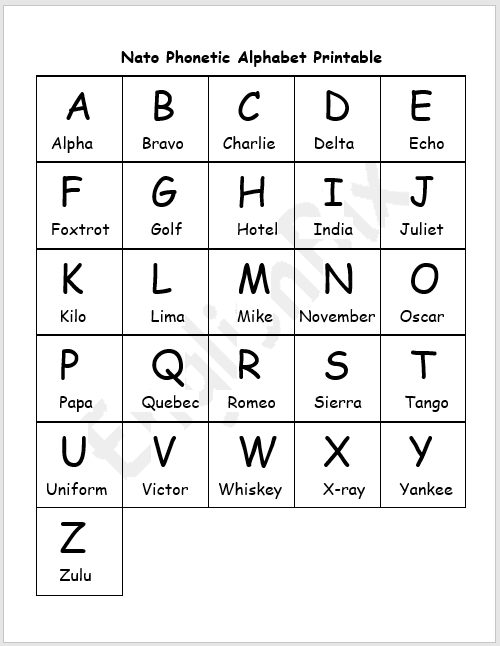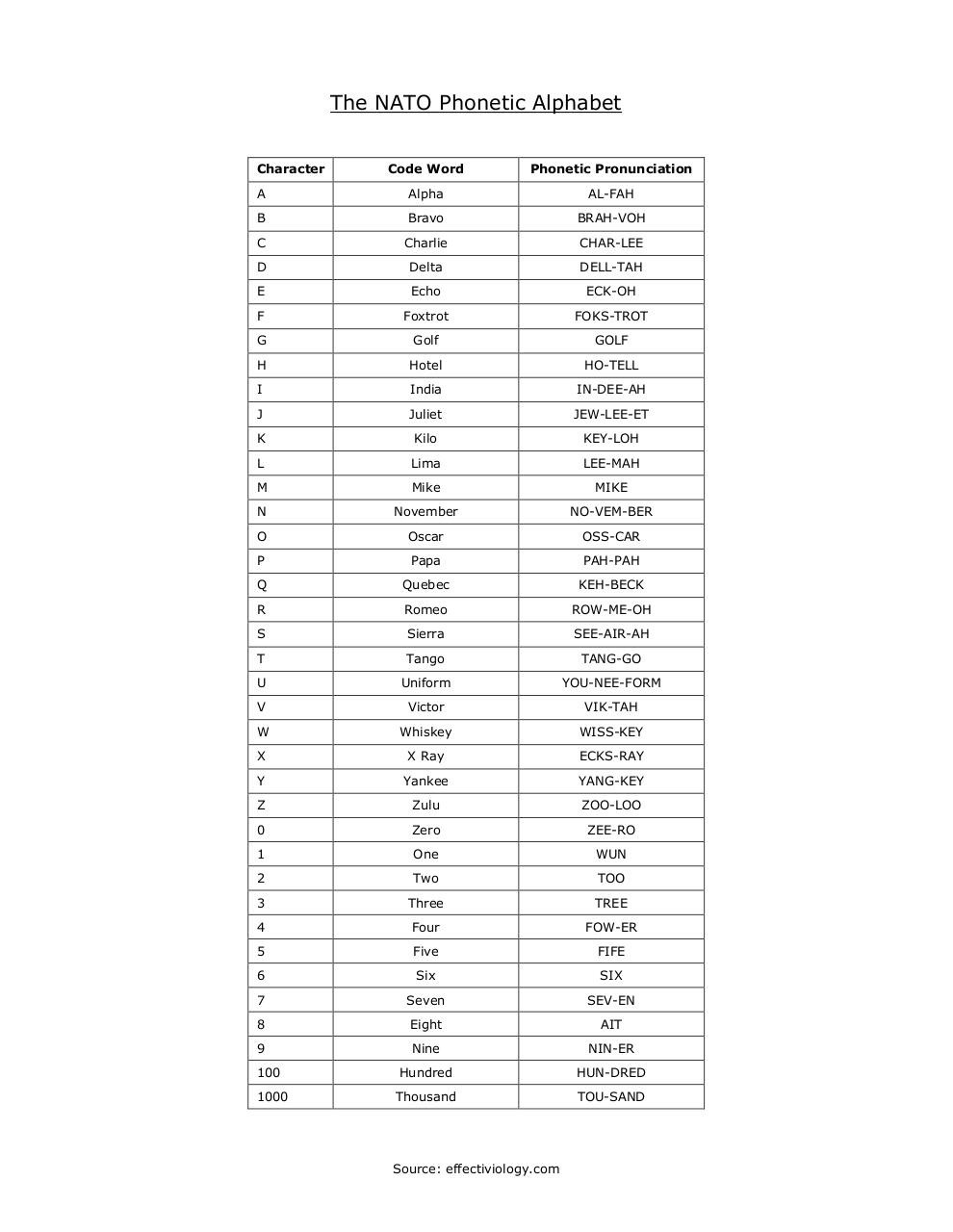In today’s modern world, communication is key. Whether it’s on the battlefield, in the police force, or even during everyday activities, having a clear and concise way to communicate can make all the difference. That is where the NATO Phonetic Alphabet comes into play. This internationally recognized system of letters and corresponding words helps ensure that communication is understood, regardless of language barriers or noisy environments.
So, what exactly is the NATO Phonetic Alphabet? Simply put, it is a standardized set of words assigned to each letter of the English alphabet. For example, instead of saying “A” as in “apple,” you would say “Alpha.” This eliminates any confusion that may arise from different accents or interpretations of the English language. Imagine a scenario where a pilot is trying to communicate with an air traffic controller amidst the noise and chaos of an airport. Using the NATO Phonetic Alphabet ensures that vital information, such as flight numbers and instructions, is conveyed accurately and efficiently.
Implementing the NATO Phonetic Alphabet requires individuals to familiarize themselves with the assigned words for each letter. Some examples include “Bravo” for “B,” “Charlie” for “C,” and “Foxtrot” for “F.” This may seem like a lot to remember, but the benefits far outweigh the initial effort. The NATO Phonetic Alphabet is not only used in military and police contexts. It is also widely adopted in various sectors, such as aviation, telecommunications, and emergency services.
One of the advantages of the NATO Phonetic Alphabet is its versatility. It can be used by English speakers worldwide, allowing for greater international cooperation and understanding. Additionally, it serves as a valuable tool for individuals learning English as a second language, as it helps facilitate pronunciation and word recognition.
The practicality of the NATO Phonetic Alphabet is evident in its widespread usage. Many countries have adopted their own versions of the alphabet, tailored to their specific languages. For example, the French version uses words like “Anatole” for “A,” “Berthe” for “B,” and “Célestin” for “C.” This shows how the NATO Phonetic Alphabet can be seamlessly integrated into different linguistic contexts while maintaining its core purpose of clear and efficient communication.
For those looking to familiarize themselves with the NATO Phonetic Alphabet, there are several resources available. Online platforms like Pinterest offer visual charts and PDF downloads showcasing the alphabet. These charts typically display the letter, corresponding word, and a relevant image, making it easier to remember and understand.
Another useful resource is EnglishBix, which provides a printable version of the NATO Phonetic Alphabet. This allows individuals to have a quick and accessible reference whenever needed. Templateroller is yet another platform that offers downloadable and printable charts of the alphabet, ensuring that the information can be easily accessed offline.
It’s important to note that the NATO Phonetic Alphabet is not just a mere assortment of words. Each word is carefully chosen to minimize confusion and misinterpretation. These words are typically distinct and easily recognizable, even in challenging environments. Additionally, the alphabet is continuously updated and revised to ensure its relevance in the ever-evolving world of communication.
Some may wonder why a standardized phonetic alphabet is necessary in the age of advanced technology. However, it’s important to remember that technology can fail, and human error is always a possibility. In these situations, having a reliable and foolproof backup communication system becomes crucial. The NATO Phonetic Alphabet acts as this backup, enabling efficient communication when traditional methods fall short.
Next time you hear someone saying “Alpha,” “Bravo,” or “Charlie,” you’ll know they are using the NATO Phonetic Alphabet. This internationally recognized system has proven its merit time and time again, ensuring that messages are conveyed accurately, regardless of the circumstances. So, whether you find yourself in the military, law enforcement, or just trying to spell out your name over a crackling phone line, the NATO Phonetic Alphabet is here to help, providing a universal language that transcends borders and facilitates clear communication.
Remember, the next time you hear someone saying “Papa,” “Zulu,” or any other term from the NATO Phonetic Alphabet, you’ll know they’re part of a system designed to make communication more efficient and accurate. It’s a fascinating aspect of modern linguistics that often goes unnoticed but plays a vital role in a variety of industries and sectors. So, the next time you find yourself spelling out your name or conveying important information, take a moment to appreciate the power of the NATO Phonetic Alphabet.
Let’s embrace the NATO Phonetic Alphabet and recognize the impact it has on our ability to communicate effectively. From the military to aviation, emergency services to telecommunications, this alphabet has proven its worth in various domains. It transcends borders, cultures, and languages, serving as a universal language that breaks through communication barriers. So, the next time you need to spell out a word or convey important information, remember the power of the NATO Phonetic Alphabet and its ability to bring clarity to our conversations.
It truly is remarkable how a simple set of words assigned to each letter can have such a profound impact on communication. The NATO Phonetic Alphabet is a testament to human ingenuity and the desire to overcome obstacles. It has become an integral part of our lives, allowing us to navigate difficult and noisy environments with ease. So, the next time you find yourself in a situation where clear and concise communication is essential, embrace the NATO Phonetic Alphabet and unlock the power of effective communication.






